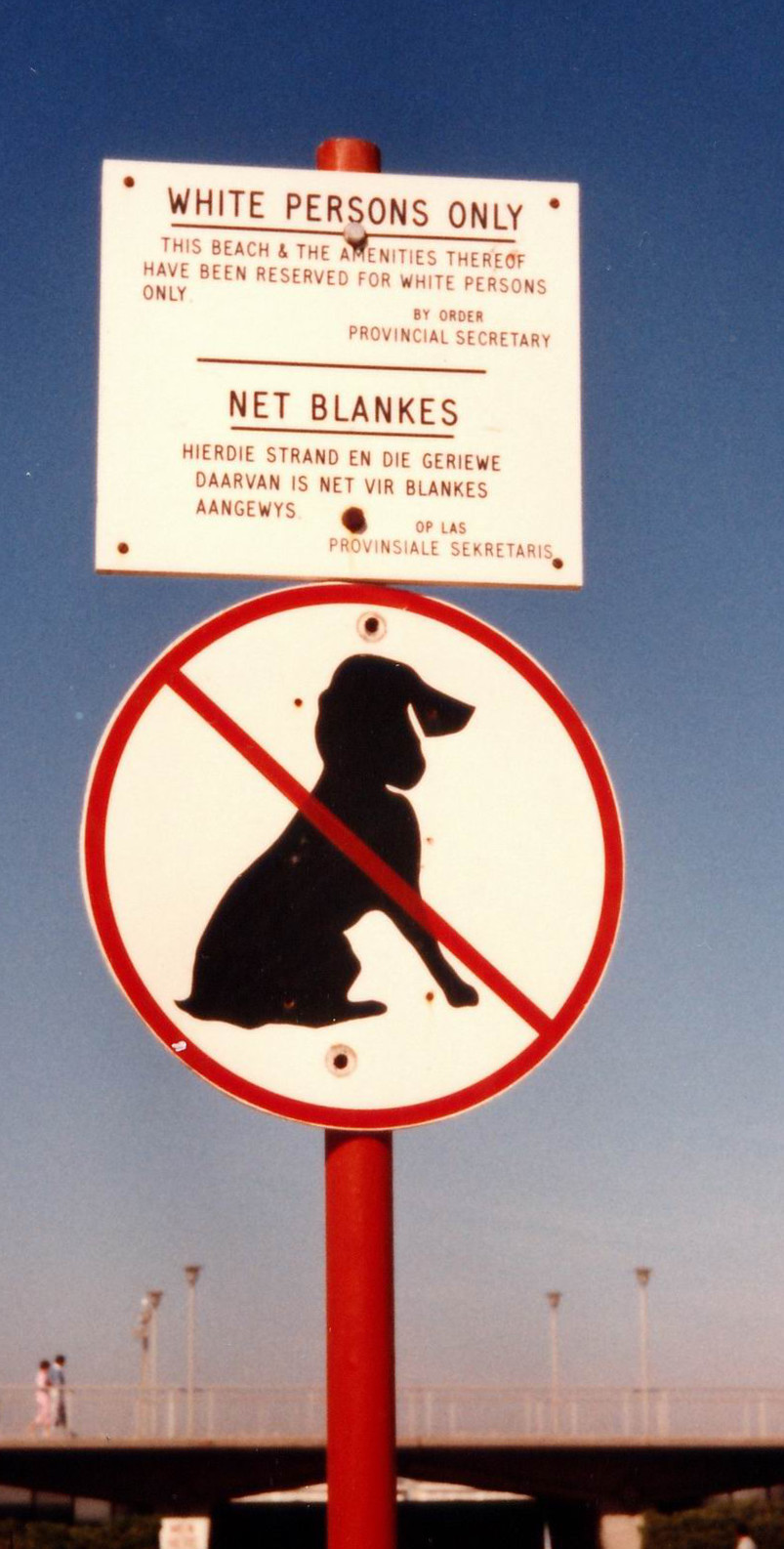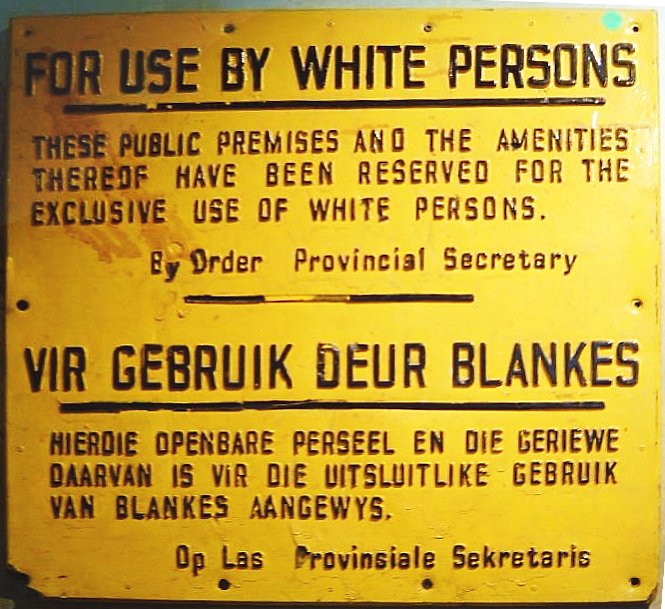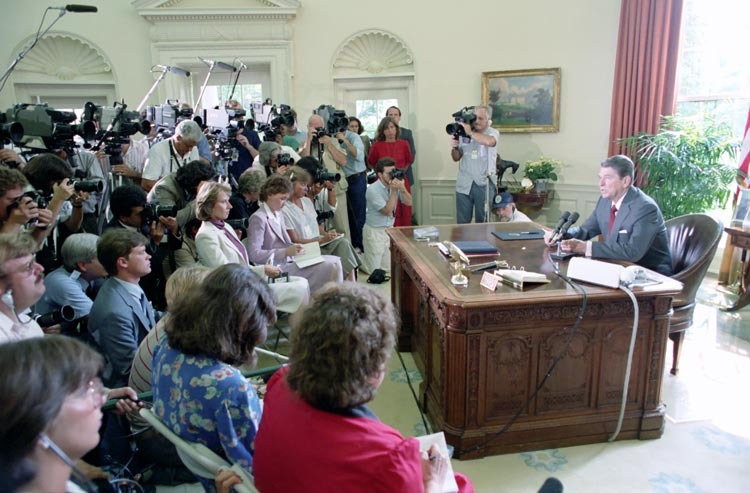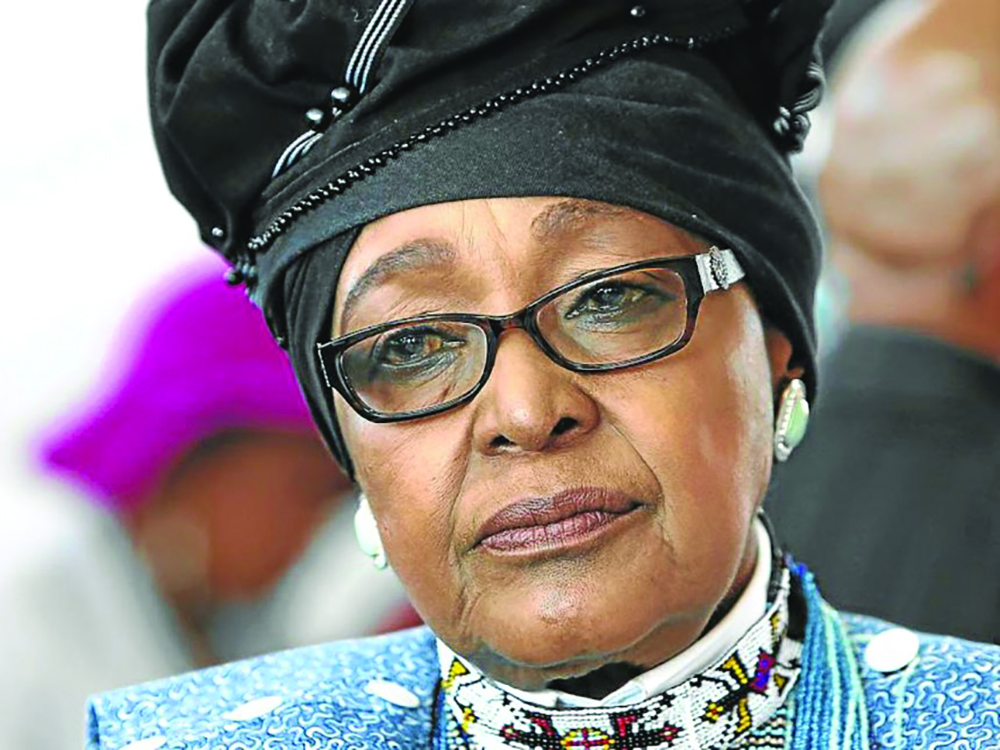

Topics on the page
The Apartheid System
-Pre- apartheid racism in South Africa
-Apartheid definition and outlines
-Apartheid laws
Anti-Apartheid Movements
-Forward to Freedom
-Anti- Apartheid Act 1986
-First All Race Elections 1994
Nelson Mandela's Influence
1995 Rugby World Cup
Women of the Apartheid
-Winnie Mandela
-Women in General
The Apartheid System
Focus Question: What was the system of apartheid in South Africa?
An apartheid, by definition, is the discriminatory and segregationist practices on the basis of race, which is entrenched in and protected by policy and systemic oppression.
The origins of the word referred to the political suppression and economic control imposed by the white minority in South Africa and was literally instituted into the political structures via enactments of apartheid laws in 1948 by the Afrikaner National Party.
The South African Apartheid from 1948- 1994 was the continuation of colonial forces that existed prior to the formalized party coming into power.
Examples of the rifts that the period of apartheid and apartheid laws created are as followed (represented by actual enacted policies but other examples of how apartheid ravaged the country include physical violence, economic and food insecurity, and too often murder)
- The Immorality Act of 1950 made sexual relations with a person of a different race a criminal offense.
- Group Areas Act of 1950 assigned races to different residential and business sections in urban areas.
- Population Registration Act of 1950 put all South Africans into three racial categories: Bantu (black African), white, or Colored (of mixed race). A fourth category, Asian (Indians and Pakistanis), was added later.
- The Bantu Homelands Citizenship Act of 1970 made every black South African a citizen of one of the homelands, effectively excluding blacks from South African politics.
For a listing of discriminatory legislation by decade, go to The Liberation Struggle from South African History Online.
To find out more about the apartheid, see The History of the Apartheid in South Africa.
Timeline of racial discrimination before apartheid system:
- 1788- Dutch colonizers started to establish laws and regulations that separated white settlers and Africans
- 1795- Dutch regulations continued after British occupation. Channeling of Africans into specific areas constituted as their "homeland"
- 1910- Separate Boer Republics united with British colony. This entity became the Union of South Africa.
- entrenching white power and privilege at the expense of Black South Africans
- the Union remained British territory but with home- rule for Afrikaners
- Louis Botha (first Prime Minister of Union) introduced formal racial segregation policies. This led to further erosion of Africans' political rights.
- In fact, the exploitation of African people and the pillaging of their natural and moral resources has been a part of the continent's ancient history, but is most relative and apparent during the early modern period (during the 17th century with the arrival of the Dutch East India company).
- In South Africa struggles for power began when the Dutch East India company arrived.
- They struggled not only against the Africans but the British as well, which made them desperate for natural resources as well as extremely bitter and racist through the 20th century.
- They were also fearful that they would again loose power again because they only were 10 percent of the population in South Africa. These factors combined led to the brutal Apartheid laws.
For more on the timeline of South Africa in terms of imperialism, conquest, and European forces: https://www.bbc.com/news/world-africa-14094918
Anti-Apartheid Movements
Focus Question: What kind of Anti-Apartheid Movements emerged?
Forward to Freedom: the British Anti- Apartheid Movement
- This movement began in the summer of 1959. Some South African exiles and their British supporters called for a boycott of South African goods. This was a response to the African National Congress (ANC) and the All- African Peoples Conference appeal.
- At first called the Boycott Movement
- Led by Tennyson Makiwane (ANC) and Patrick van Rensburg (South African Liberal Party), called for a national boycott month in March 1960
- Began with a rally of 8,000 people in Trafalgar Square (London) addressed by Hugh Gaitskell, Jeremy Thorpe (Liberal MP), and Trevor Huddleston.
- March 21- South African police opened fire on civilians protesting at Sharpeville in the Transvaal (South Africa). British- made Saracen tanks were used.
- This led to strong international protest and another rally in Trafalgar Square. They wanted termination of British arms supplies in South Africa
- The Boycott Movement realized a permanent organization was needed. As a result, during the summer of 1960, the Movement reorganized into the Anti- Apartheid MOvement (AAM). Their goal was to get rid of the apartheid system in South African and to give support to those suffering under the apartheid system.
Anti-Apartheid Act of 1986
- During the 1980's, the conservative administration of President Ronald Reagan faced insistent pressures for sanctions against South Africa.
- America's resentment of South Africa's racial policies was enough for Congress to pass (over Reagan's veto) the Comprehensive Anti- Apartheid Act. This banned new investments and loans, ended air links, and prohibited the importation of many commodities.

- This law was intended to express United States opposition to the apartheid regime in South Africa. It sought to bring worldwide and political/ economic pressure on South Africa's government with a view to creating a democratic, nonracial society.
Congress copy of Anti- Apartheid Act: https://www.congress.gov/bill/99th-congress/house-bill/4868
President Ronald Reagan's statement on Comprehensive Anti- Apartheid Act of 1986: https://www.reaganlibrary.gov/research/speeches/100286d
First All-Race Elections of 1994
- This election marked the end of the apartheid in South Africa. It was held on April 1994, and was observed by the Commonwealth Observer Group under the leadership of Michael Manley (former Prime Minister of Jamaica)
- It was the first election in which all South Africans could vote. 19.5 million South Africans cast their votes in this first democratic election.
- On April 26, 1994, the new South Africa flag was raised, with the new Constitution and Bill of Rights taking effect the day after.
- "Homelands" and racial apartheid were abolished. Nelson Mandela stated that the South Africans were free at last.
 The Day Gogo Went to Vote is a picture book about the first democratic election in South Africa where Black citizens were allowed to vote in April 27-28,1994.
The Day Gogo Went to Vote is a picture book about the first democratic election in South Africa where Black citizens were allowed to vote in April 27-28,1994.
Democratic Elections, from South Africa: Overcoming Apartheid, Building Democracy, Michigan State University
For photos of the elections, go to UN News and Media Photo for images.
Constitution of the Republic of South Africa, 1996.
Nelson Mandela Capture Site Monument, in Howick, South Africa

Nelson Mandela's Influence
Focus Question: How did Nelson Mandela contribute to the fall of apartheid in South Africa?
Nelson Mandela joined the African National Congress (ANC) which was involved in many campaigns and protest to bring down the Apartheid. They were considered illegal and often in trouble with the law.
- Nelson Mandela's contribution and dedication to South Africa’s struggle in achieving freedom and equal rights for every South African led to his popularity and respect in South Africa.
In the 1950’s, Mandela began working on ending the apartheid.
- In 1964, he was arrested and imprisoned for trying to overthrow the government, but continued his fight even from his prison cell.
- After his release in 1990, Mandela traveled throughout the world trying to earn money to support the anti-apartheid movement. Mandela continued to advocate equality for all South Africans regardless of their ethnic backgrounds.
- In 1994, Nelson Mandela became the first black South African to be elected as president of his country. His presidency was characterized by the successful negotiation of a new constitution for South Africa, but his main focus was the restructuring of South Africa after the damage done by the apartheid.
- For autobiographical and related primary source material on Nelson Mandela's experiences as a revolutionary, link to The Long Walk of Nelson Mandela, a website from PBS.
1995 Rugby World Cup
Francois Pienaar: When the Whistle Blew, South Africa Changed Forever
- Click here for the Invictus movie trailer, a 2009 film staring Morgan Freeman and Matt Damon, directed by Clint Eastwood, about the South African rugby team and its play in the 1995 Rugby World Cup that was held after the end of apartheid.
Poet Maya Angelou's Tribute to Nelson Mandela: We Lift Our Tearful Voices To Say 'Thank You" (December 2013).
The Nelson Mandela Monument by Marco Cianfanelli commemorates his 1962 capture by apartheid police
Video of Nelson Mandela

Click here for selections from Nelson Mandela's autobiography.
Click here for Nelson Mandela's Inaugural Address (May 10, 1994)
Women of the Apartheid

Winnie Madikizela- Mandela
Husband and Lover discusses the relationship of Nelson Mandela and Wiinnie Madikizela-Mandela from Frontline's The Long Walk of Nelson Mandela.
 Click here for selections from Winnie Madikizela-Mandela's memoir, 491 Days: Prisoner Number 1323/69.
Click here for selections from Winnie Madikizela-Mandela's memoir, 491 Days: Prisoner Number 1323/69.
Jaqueline Derens - author of "The Women of South Africa - A Story of Resistance"
Derens, a frenchwoman, was close with Mandela in the fight to end the white minority rule in South Africa. Watch this interview where she talks about women's contributions to the movement and what women in this country and around the world are still fighting for today.
https://www.thelocal.fr/tag/jacqueline-derens/  Jaqueline Derens and Nelson Mandela
Jaqueline Derens and Nelson Mandela
Women in General
- Many women fought racial oppression in South African before the apartheid began in 1948. For example, women in the Free State organized by Charlotte Maxeke fought against carrying passes on September 1913.
- The three forms of oppression that Black women faced in South Africa during the apartheid were racial, social, and sexual oppression.
- The Defiance Campaign of 1952 was the first campaign where many women involved themselves in anti- apartheid involvements. People were asked to publicly break apartheid laws during the Defiance Campaign. The point of doing this was to clog the apartheid criminal justice system to the point reform would be inevitable.
- The ANC Women's League (ANCWL), formed in 1948, was an important women's organization formed to fight apartheid. Ida Mntwana was the first official president.
- The ANCWL made sure women's demands were included in the Freedom Charter
- They also organized the Union Buildings march.
- when the ANC were banned in 1960, the ANCWL were also affected because many leaders went into exile. However, it continued to function for the next few years through different names and regional branches
Sources
http://www-cs-students.stanford.edu/~cale/cs201/apartheid.hist.html
New additions:
Nelson Mandela's Inaugural Address. Retrieved 28 February 2011 from Famous Speech's site: http://www.famousquotes.me.uk/speeches/Nelson_Mandela/index.htm.
The History of Apartheid in South Africa. Retrieved 28 February 2011: http://www-cs-students.stanford.edu/~cale/cs201/apartheid.hist.html.
Apartheid South Africa--History of Apartheid. Retrieved 28 February 2011 from Apartheid South Africa's site: http://www.southafrica.to/history/Apartheid/apartheid.htm.
Apartheid Photos (2009). Retrieved 28 February 2011 from the UN's site: http://www.unmultimedia.org/photo/gallery.jsp?query=subject:Apartheid&startat=0&sf.
South Africa: Overcoming Apartheid Building Democracy. Retrieved 28 February 2011 from Overcoming Apartheid's site: http://overcomingapartheid.msu.edu/.
Nelson Mandela--Memory: Using Memory to Create Social Justice (2011). Retrieved 3 March 2011 from Nelson Mandela's Foundation's site: http://www.nelsonmandela.org/index.php/memory/views/biography.
Mandela's Life and Times (2011). Retrieved 3 March 2011 from BBC's site: http://www.bbc.co.uk/news/world-africa-12305154.
Internet African History Sourcebook (2007). Retrieved 3 March 2011 from Internet History Sourcebooks Project's site: http://www.fordham.edu/halsall/africa/africasbook.html.
Africa Focus: Sights and Sounds of a Continent. Retrieved 3 March 2011 from University of Wisconsin Digital Collection's site: http://digicoll.library.wisc.edu/AfricaFocus/.
African Posters (2008). Retrieved 3 March 2011 from Northwestern University Library's site: http://digital.library.northwestern.edu/africana-posters/index.html.
New image of Nelson Mandela obtained from Wikimedia Commons 28 February 2011.
Comments (0)
You don't have permission to comment on this page.